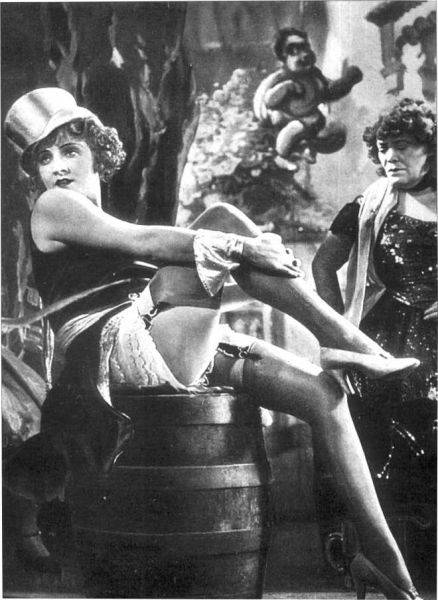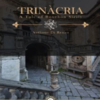The Devil and Dr. Paglia
Art and Reality
From the beginning of the 19th thru the early 20th century, German scholarship in quantitative and qualitative terms was analogous to the prodigious output of art in the Italian “Quattrocento”. It was a truly remarkable era of historical writing by the likes of Ranke, Wilamowitz-Moellendorff, Niebuhr, Meyer, Zeller, Jaeger, etc. It’s hardly possible to list all the brilliant scholars and a bibliography of the works they produced in that century and a half. This extraordinary scholarship was the result of a highly efficient education system that integrated the pre-university gymnasium schools with the universities.
Interestingly, to my mind, throughout this golden era of teaching and scholarship, a reoccurring theme in German literature, music and film was the Faustian tragedy. Repeatedly, in many different plots and scenarios, German artist presented us with teachers and scholars frustrated with the academic life, diabolically lured out of academia into the world at large, resulting in intellectual and/or physical demise. For example, at the very onset of this golden era of German scholarship, in 1808, Goethe wrote “Faust”. At the end of the era, in 1947, Thomas Mann published his novel “Doctor Faustus". In between, Heine (“Der Doktor Faust”), Heinrich Mann (“Professor Unrat), Mahler (Symphony No. 8) and Hesse (“Magister Ludi”) developed the Faustian theme in literature and symphony. The theme also entered the world of German pop culture with Friedrich Wilhelm Murnau’s 1926 film “Faust”, and immortalized in the 1930 Jonas Sternberg film “The Blue Angel”, staring the incomparable Marline Dietrich.
At least since Plato the perennial question in Western aesthetics has to do with reality and art. Some, like Plato, think artists distort reality, while others argue that artists, responding to their muse, present subliminal realities. In the context of this aesthetic dichotomy, one wonders what the German artists are telling us about the world of academia and the life of teachers and scholars – if anything. Were the artist distorting reality just to entertain us, or were they describing a veiled reality of academia and academicians?
To my mind, the Faustian metaphor is one way to understand the reality of Camille Puglia’s career. Like Faust she is a brilliant scholar who has been lured away from research into the world of pop culture and entertainment. Faust traveled to the royal courts of Europe entertaining the nobility with his magic. Paglia travels to the universities entertaining the literati with her wit. Two thousand came to her talk (show) at world renowned M.I.T.
Born to be a scholar
Early in life, Camelli Paglia showed a passion for research and academic inclinations. She wrote:
“In high school, I was notorious for my Amelia Earhart obsession. The newspaper actually reported this. For three years I did this Amelia Earhart research. The biographer of Amelia Earhart told me I had done more research in the primary sources than he had! I spent every Saturday in the bowels of the public library going through all these materials, old magazines and newspapers…”
Think about it…a high school teenager spending Saturdays in the library by her own volition. If one takes a random sample of high school teenagers, what is the probability of finding one who spends weekends in the library doing original research with source documents? I should think that the probability is close to zero. In short, she was a very unique child with a passion for research.
After high school, she went to Harper College graduating Valedictorian with A’s in all her course except for one B. She went on to Yale Graduate School and for her last graduate seminar, before receiving a Master Degree, she wrote a 160-page paper entitled "Male and Female in Virginia Woolf”. The renown scholar Harold Bloom became her mentor guiding her doctorial dissertation. Indeed, she did not ask him to be her mentor; he solicited her for the privilege. The respected academic publishing house Yale University Press published her dissertation as the now famous, though I suspect seldom read, Sexual Persona.
Sexual Persona is a masterful work of scholarship (673 pages; 810 footnotes; 18 page index) which seeks, in Paglia’s words: “…to demonstrate the unity and continuity of Western Culture from antiquity to the end of the nineteenth century.” To that end, the factual base is enormous and the conceptual constructs such as ‘androgyny’ and ‘paganism’ effectively bring diverse works of art to a classification system and a unified theory of Western culture. In the introduction, Paglia projected a second volume of Sexual Persona that would bring “modern popular culture – cinema, television, sports, rock music” under the aegis of her unifying theory of Western cultural.
With the publication of Sexual Persona Camilla Paglia was in the process of transcending historic scholarship and art criticism. She was on the cusp of philosophy. One hundred percent Italian by nature and nurture, she was to my mind following and near entering into dialogue with great Italian philosophers of culture like Croce and Eco. Sadly, she did not rise to philosophy. Rather, she dropped into pop culture.
Faustian temptation
Dr. Paglia writes: “It all began in March 1990, one month after the uneventful release of Sexual Personae by Yale University Press” - “ALL” denoting a major change in life style and work. The devil (metaphorically speaking – of course) entered Paglia’s life in the form of a “stranger”; scholastically she has not been the same since. She writes: “I received a letter from a stranger, a professor of classics and editor of a scholarly journal Arion. He asked if I would review two new classics books in gay studies by authors I had never heard of…”
Paglia’s mentor Harold Bloom, acting the role of the ‘good angel’ or Greek chorus, tried to dissuade the protagonist from the project. She writes: “…to the disapproval of my great mentor, Harold Bloom, who felt I should be concentrating on my own career and getting Volume Two (Sexual Persona) ready for publication.” But, the temptation was too strong. She began work on the Arion essay.
The difference between the scholarly character of Sexual Persona and the Arion article “Junk Bonds and Corporate Raiders…”(see “Sex, Art, and American Culture”) is stunning. There is no semblance of the mature critical scholarship in the Arion article of which Paglia is obviously capable. Instead, it is filled with ad hominem arguments, insults, sweeping generalizations, etc. It is emotional to point of hysterical.
Critical scholarship (i.e. the critique of a scholarly work) is sedate (i.e. deliberate, composed, and dignified). It is done one proposition at a time. ‘Empirical propositions’ judged to be false, ‘inferential propositions’ judged to be fallacious and ‘theoretical (causal) propositions’ judged unverifiable are demonstrated to be so each in its turn. Facts and logic are the only criteria for evaluation. There is no place for references to personalities (i.e. qualities, traits, character or behavior peculiar to a specific writer) or ideologies.
For example, when Fr. Joseph Owens (parish priest turned scholar) effectively challenged the great German philologist Werner Jaeger’s interpretation of Aristotle, in the whole of Owen’s book (“Doctrine of Being in the Aristotelian Metaphysics”) there is not one reference to Jaeger per se, only the words that Jaeger wrote. Fr. Owens characterized his approach to critical scholarship as “… a ‘listening’ attitude [which] may at times involve tedious reading…but seems to be the only method that offers any acceptable promise…”
Sexual Persona Vol 2 was never written. Instead of describing, explaining and incorporating 20th century pop culture with the rest of Western culture, as she had planned and Bloom was encouraging, Paglia polished her act and became a pop culture persona.
The Devil’s Ploy
Pop culture stars come and go. Paglia’s appeal was her outrageousness. She built her pop culture act on outrageous attacks on the feminist movement, opinions about date rape, the ad hominem denigration of scholars, etc. But, that type of thing “gets old”. It becomes clichéd.
Madonna’s longevity in pop culture is predicated on her ability to keep reinventing herself; to keep bringing forth new “personas”. Paglia’s persona is fixed. When she appeared for six minutes on the Bill Maher show, she was introduced as “one of the most provocative intellectuals”.
In show business, for an act to be successful, it must live up to its billing. It must give the audience what they expect. Accordingly, Paglia once introduced as “provocative” must in fact be “provocative.” And, she was! But, the best she could come up with was saying she liked the TV program “The Bachelorettes” which she thinks “is edited wonderfully” and “is a great escapist fantasy.” True to her billing as provocative, the host, other panelist and audience went wild about a “scholar” and “feminist” finding value in a show that a male panelist characterized as “objectifying women.”
When Maher asked her about Michael Jackson, who at the time was involved with a child sex scandal, her response was as much about her as Jackson. She said: “He is a victim of fame...” Jackson and Paglia, like all Faustian characters, are victims of fame. Fame is the devil’s ploy and they succumb.
Faust’s Redemption – “Break, Blow, Burn”
In Goethe’s version of the Faust legend, Faust realizes the errors of his misbegotten ways and finds redemption. Dr. Paglia’s most recent book suggests that she is tiring of ‘the Devil’s road show.' “Break, Blow, Burn” is not a scholarly work, but it is a pedagogical gem. In her words: “This book is intended for a general audience…I have tried to write concise commentaries on poetry that illuminate the text but also give pleasure in themselves as pieces of writing.”
For all her ‘antics’, Dr. Paglia never lost sight of teaching. Whenever she speaks, whatever she writes, she always comments about education. She pays homage to her the great teacher in her life Milton Kessler (see “Sex, Art…”). The course that she co-developed and taught with Lily Yeh “East and West” is brilliant (ibid). What I wouldn’t have given to have this course and “Break, Blow, Burn” offered to me when I was in school!
Perhaps the publication of “Break, Blow, Burn” is the step back into scholarship. In an interview about the book she said:
“My agent wanted me to do a big splashy book on politics…I have done all those attacks on post-structuralism in Arion and junk-bond corporations and corporate raiders in the early ‘90s, now I want to go directly to the general readers and also to young people…”
The problem is, as stated, her “attacks on post-structuralism”, etc. were verbal ad hominens. Still, to my mind, are needed more rigorously scholarly (a la Owens) critiques of those theories, which she is uniquely capable of writing.
Clive James in New York Times summed it up nicely:
“Paglia by now should be famous enough to start throttling back on some of the stuff she is famous for. She might make a start with bitchery…The media want snide remarks from her …But writers capable of developing a nuanced position over the length of an essay should not be tempted into believing that they can sum it up in a sound bite.”
Dr. Paglia is brilliant. Her encyclopedic knowledge of art, literature and history is nothing less than amazing to me. She has proved that she is capable of epistemologically rigorous research and writing. Hopefully, she will return. She has much to offer academia, and pop culture has more than enough Vaudeville acts.
Italian Americana
Finally, let me say as an Italian American; census department statistics demonstrate beyond a doubt that we have precious few PhDs in the humanities. Dr. Paglia’s four grandparents and mother are ‘off the boat.’ She is proud of her Italian heritage, she brags about her Italian heritage, she explains her behavior in terms of her Italian heritage. In turn, I agree with Clive James who wrote: “…the Italians, should be proud of her parentage…”
We should be proud of her. She is one of the brightest lights in that small constellation of Italian American humanist. My only criticism (disappointment) is that, to my mind, she has not remotely reach the degree of luminosity of which she is capable.





































i-Italy
Facebook
Google+
This work may not be reproduced, in whole or in part, without prior written permission.
Questo lavoro non può essere riprodotto, in tutto o in parte, senza permesso scritto.